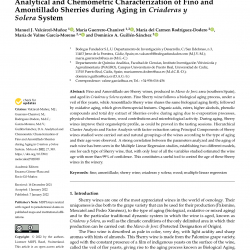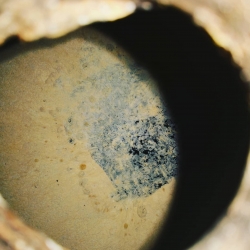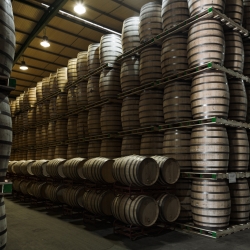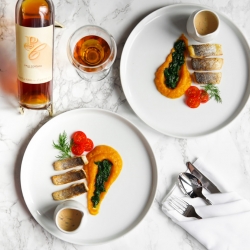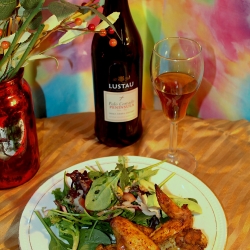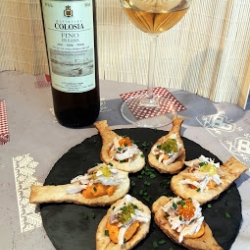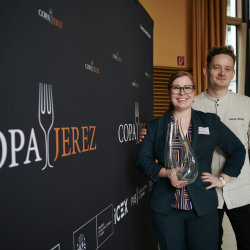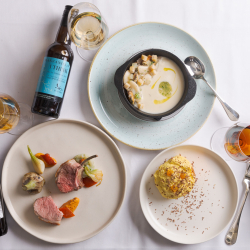Why 2017 is the year of sherry
The objective of the following few lines is, on the one hand, to recruit new Sherry enthusiasts to the cause, and on the other hand to rally those of us who have already been irredeemably bewitched by its spell.
In talking about Sherry we are not referring to elderly eccentrically dressed English ladies gossiping away with a little glass in their hand filled to the brim with sweet liquid. Nor are we referring to cocky “gentlemen” with slicked back hair and their horse parked at the door of the bar. And much less about the crazy youngsters from the fairs with their bawdy Sevillanas and their half bottles treated with doubtful care, accompanied or not by a mixer. Why? Because we are here to enjoy ourselves. To discover a wine – not a liquor – that will bewitch us if given the chance. If we let it into our lives we can be sure it will never leave us. We won’t let it.
To start with, let us try and explain briefly what it is. The Denominación de Origen Jerez-Xérès-Sherry includes wines from Jerez de la Frontera, El Puerto de Santa María and Manzanilla from Sanlúcar de Barrameda. There are various styles according to their place of origin, the kind of aging they have undergone and their alcoholic strength. Let us focus on the dry styles; there will be other opportunities to talk about the sweet ones. Neither are we going to discuss here the subject of musts from which this story begins. Take care, what we call must here is not the unfermented sweet grape juice of other places but white wine from the latest harvest, made from the Palomino Fino grape which predominates in the province of Cádiz. Some of these are absolute jewels which we hedonists with restless and enquiring minds will discover another day.

The magic begins with so called must, oxygen and the addition of alcohol (or not) in partially filled butts. We start with the must to which we add alcohol to help the growth of “flor”, a film of special yeasts which appears spontaneously on its surface, covering it completely and thus preventing oxidation. In the opinion of some it is not necessary to add extra alcohol - a process called “encabezado” - but let us not become involved in disputes. Nowadays it simply makes things easier, nothing more. What will now take place inside the butt is known as “crianza biológica” or biological ageing. Let us continue.
This wine is stored in 600 litre American oak barrels called “butts” and it remains there for more or less time: from two years to infinity, depending on the kind of wine we wish to make. Another special characteristic of Sherry is that it is not generally the wine of a single year but a blend of different ones. This is due to the use of the system of “criaderas” and “soleras”. The butts are positioned in various rows one on top of the other. The ones closest to the ground, the solera, contain the oldest wine and from here it is drawn for bottling. Once wine has been extracted the solera is topped up with more wine from the first criadera, and it is in turn topped up from the second criadera, and thus successively until the highest row is reached, and that will be topped up with the new wine.
But let us not complicate things and concentrate on the wines. The biologically aged wines are the ones we encounter most on the marketplace, the Finos, Manzanillas and Amontillados. Let’s take a look at them.
Fino is a wine of about 15 degrees which has been in butts under a film of flor yeast; for 2 years for the younger and fresher ones and up to 10 years for the more complex and developed ones. For the uninitiated it would be better to start with the younger ones, although the more they get tangled in Sherry’s net, the more they will appreciate the older ones. Manzanillas are made in exactly the same way but they must be aged in bodegas in the town of Sanlúcar de Barrameda on the banks of the mouth of the river Guadalquivir where the marine atmosphere confers on them a joyous crisp character. So remember; if it is Manzanilla it is from Sanlúcar.

Let’s try a Valdespino Fino Inocente (Grupo Estévez) which is outstanding value for money and an ideal introduction to this wonderful world. A wine of pale colour, it is delicate with aromas of the flor yeast, light yet persistent and perfect with a comforting galera soup (galera = a kind of prawn). This is affordable luxury.
Another Fino in this class which we like very much is El Maestro Sierra (Bodegas El Maestro Sierra), dry, finely honed and subtle; we enjoy it with juicy tuna in brine.
Let’s take a stroll in the upper district of Sanlúcar to have a glass of Manzanilla Callejuela en rama (Bodega Viña Callejuela). “En rama” means that the wine has not been subjected to filtration and was bottled straight from the butt. Strawy yellow in colour it has amazing aromas of citrus, butter and nuts. Its full flavour develops on the palate and it cries out for “ajo caliente”, a dish as traditional and humble as it is laborious and delicious. (Garlic, tomato, green pepper, bread, olive oil, hot water)
Now let’s look at a Manzanilla Pasada Pastora (Bodegas Barbadillo), one of those wines which have aged around 10 years in its journey towards excellence. It is intense and elegant and we drink it in the superb company of some “tagarninas esparragás” (kind of chard stew with garlic and bread), an exquisite dish with a free range egg on top. One couldn’t ask for more.
Now for the Amontillados: one step further if we dare take it, will put an end to any possibility of saying no to Sherry. How is it made? It is simply further evolution of Fino or Manzanilla. If we leave the wine in the butt for even longer, the film of flor yeast will start to break up, allowing air to enter and the wine to oxidise. That is to say that in Amontillado we find a wine which has aged both biologically – which we have explained already – and oxidatively. These are intense and expressive wines which will never leave us indifferent; for many the purest expression of the Sherry district.
Let’s drink some Amontillado Jalifa (Bodegas Williams & Humbert), old gold in colour and penetrating, in which without losing its essence, the flavour has veered towards hazelnut. It is a fantastic accompaniment to crunchy saline “ortiguillas fritas”. These are sea anemones, not seaweed.
Before looking into Sherry’s more mysterious side, we can’t resist a glass of Amontillado Fino Fossi (Bodegas Primitivo Collantes). It is expressive, nutty and deeply flavoured, and gives us an appetite for some artichokes stewed in a little of the wine itself. Those who say that artichokes don’t go with wine obviously haven’t properly explored these parts.
And on to the Palo Cortado - but let’s avoid all the myths and legends. It is a wine which starts with biological ageing, with flor yeast, but at a specific point the winemaker decides it should age oxidatively. To put it simply when you smell it, you perceive the finesse of an Amontillado, but when you taste it, its fuller body is that of an Oloroso. So there you have it. Without any further ado let’s try a Palo Cortado Bertola (Bodegas Díez Mérito). It is complex and delicate, perfect with a tasty dish of duck with rice. Then there is the Palo Cortado Cruz Vieja (Bodegas Faustino González), persistent, balanced and with enormous elegance. What to drink it with? Cheese, cheese, cheese!
So let us finish up with the Olorosos. These are wines which have never been affected by the now famous flor yeasts; there has been no biological ageing, and they have been exposed to the effects of the air right from the start. This is oxidative ageing. This way they attain power, body and aromas which have much to do with the butts in which they age.
The Oloroso Viejo Piñero (Bodegas Juan Piñero) is mahogany-coloured with aromas of orange and spice and has unbelievable length. It goes perfectly with stewed oxtail and crunchy fried potatoes.
Let us bring our tour of the Sherry country to a close with some Governador Oloroso Seco (Bodegas Emilio Hidalgo) which evokes old furniture, nuts and, well, emotion. We enjoy it with a dessert of bitter chocolate cream with hazelnuts and continue with this wine after dinner hoping this moment will never end.

Written by Carmen Martínez de Artola | 06/01/2017 published in Spanish on Guía Hedonista
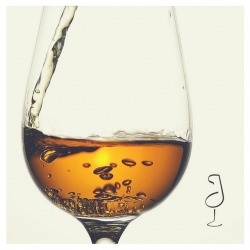

25 February 2017


